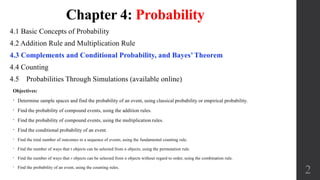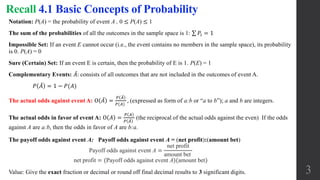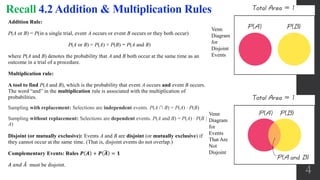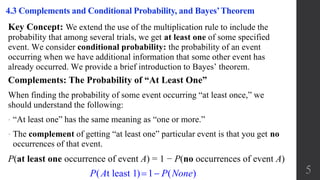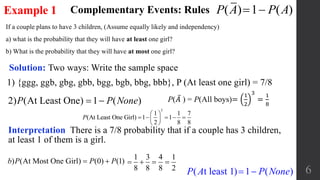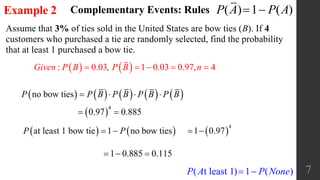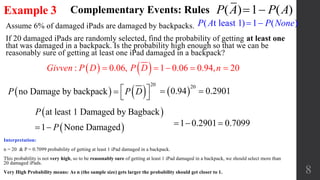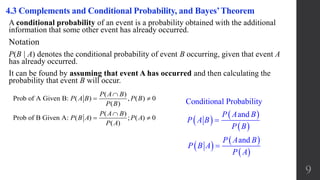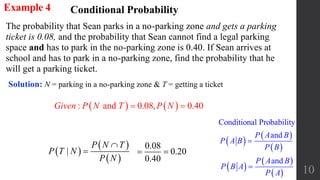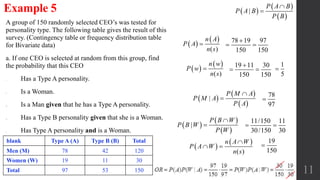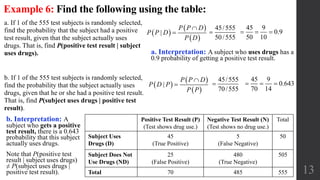This document provides an overview of probability concepts including complements, conditional probability, and Bayes' theorem. It defines key probability terms and notation. Examples are provided to demonstrate how to calculate probabilities of events, complementary events, conditional probabilities, and use Bayes' theorem. Objectives cover determining sample spaces, finding probabilities using classical or empirical methods, and applying addition, multiplication, counting and other probability rules.

